Reasons for Slab Heating
Hydronic slab heating is a great choice because your heat conductor is built into the floor. The concrete is a perfect medium for conducting heat from the tubing into the room above.
Simple
If you are pouring a concrete slab, put tubing in it. The tubing can be tied to the reinforcing wire or rebar already spec'd in the slab. Or it can be stapled to the insulation below the slab which is commonly required and many municipalities.
Economical
Since the concrete is your heat conductor, you only need to pay for the tubing and manifolds which are relatively inexpensive compared to other forms of radiant floor heating.
Comfortable
Depending on the tubing spacing, flexibility can be your most important detail when selecting a hydronic slab tubing. Radiant floor slabs can have tubing as tight as 6 in. spacing. If your tubing has a 4 in. bend radius you will be making a 8 in. "tear drop" bend when making a 180 deg. turn. This can make tubing installation complicated and time consuming. When installing a snow melting slab you almost always want a large diameter tubing like 3/4 in. on tight spacing like 9 in. to prevent heating stipes from forming on the slab. However, in most slabs the spacing is higher than the tightest bend of the tubing so you have greater choice in tubing types.
Choices of Slab Tubing
Hydronic slab heating is a great choice because you can choose just about any type of tubing and still effectively heat your slab. When choosing your tubing you need to consider a few things.
O2 Barrier
Make sure your slab heating system has a oxygen barrier in the tubing. Although we may design systems with NO ferrous material that would be subject to corrosion due to oxygen presence in the fluid, you will often save the warranties on many components in the system if you make sure to use Oxygen Barrier tubing.
Cost
Cheapest is not always the best choice but when choosing a tubing for slab heating. However, the cheapest tubing will still probably do the job just fine.
Flexibility
Depending on the tubing spacing, flexibility can be your most important detail when selecting a hydronic slab tubing. Radiant floor slabs can have tubing as tight as 6 in. spacing. If your tubing has a 4 in. bend radius you will be making a 8 in. "tear drop" bend when making a 180 deg. turn. This can make tubing installation complicated and time consuming. When installing a snow melting slab you almost always want a large diameter tubing like 3/4 in. on tight spacing like 9 in. to prevent heating stipes from forming on the slab. However, in most slabs the spacing is higher than the tightest bend of the tubing so you have greater choice in tubing types.
Durability
When tubing is installed in a slab, it is essentially set-in-stone. It is well protected from future damage. However, during installation the tubing can be kinked or scored. Choose a more durable tubing when jobsite damage is possible. Sometimes, durability is inversely related to flexibility. The more flexible the tubing, the less durable.
Warranty
Look for the best warranty you can get from a company with a well established company. Some companies give "replacement" warranties where they will pay to have the heated slab replaced if the tubing fails. This is like an insurance policy on your heating slab. Other manufacturers only give you more tubing. You can also be sure that a company that give a good warranty does a better job at quality control to limit their exposure to warranty claims.
Types of Slab Heating Tubing
Hydronic slab heating tubing comes in a few different choices and some find it quite confusing. Here is a little details on tubing materials.
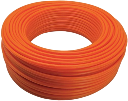
PEX
One of the most popular tubing materials for slab heating. Low cost, high flexibility, very durable and up to 25 year replacement warranties.
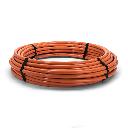
PERT
The next generation of plastic slab heating tubing. More flexible than PEX, lower cost, durable and 25 year warranties available.
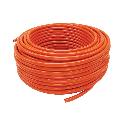
PEX-AL-PEX
Has been around for a long time. There is a layer of PEX on the inside of the tubing for corrosion resistance. Surrounded by a layer of aluminum for strength and oxygen barrier. Then a layer of PEX on the outside of the tubing for durability. This is nice tubing to install since the aluminum maintains the tubing shape. I.e. if you bend the tubing it will stay bent. If you straighten the tubing it will stay straight. It does not expand with temperature as PEX and PERT tubing's do.
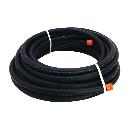
EPDM
The most flexible tubing we have on the market. The most durable tubing we have on the market, almost unable to be damaged. 25 year warranties available however the most expensive tubing. But if you price out a system you may find the EPDM tubing the best for your application. We have seen snow melting slabs installed in close to freezing temperatures with textured slab cuts greatly benefit from the flexibility of the EPDM tubing.
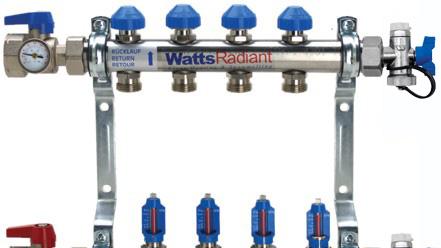
Manifolds
They take the most abuse of any component in a Slab Heating System. Choose your manifold wisely.

Tools & Hardware
All the tools and hardware to install your Radiant Slab system.
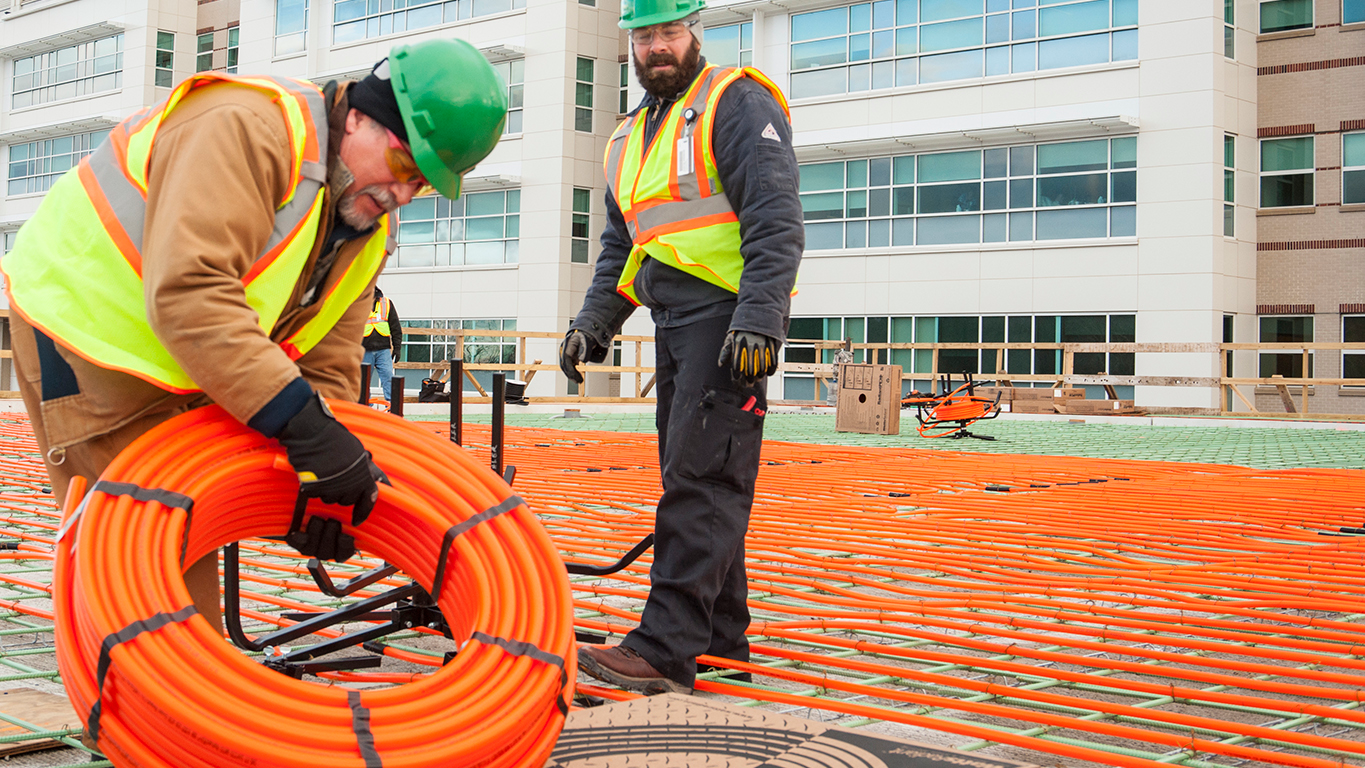
Freezer Floor
Anti-heave slabs under freezer floors are needed to keep the ground below the freezer from buckling and cracking the slab.
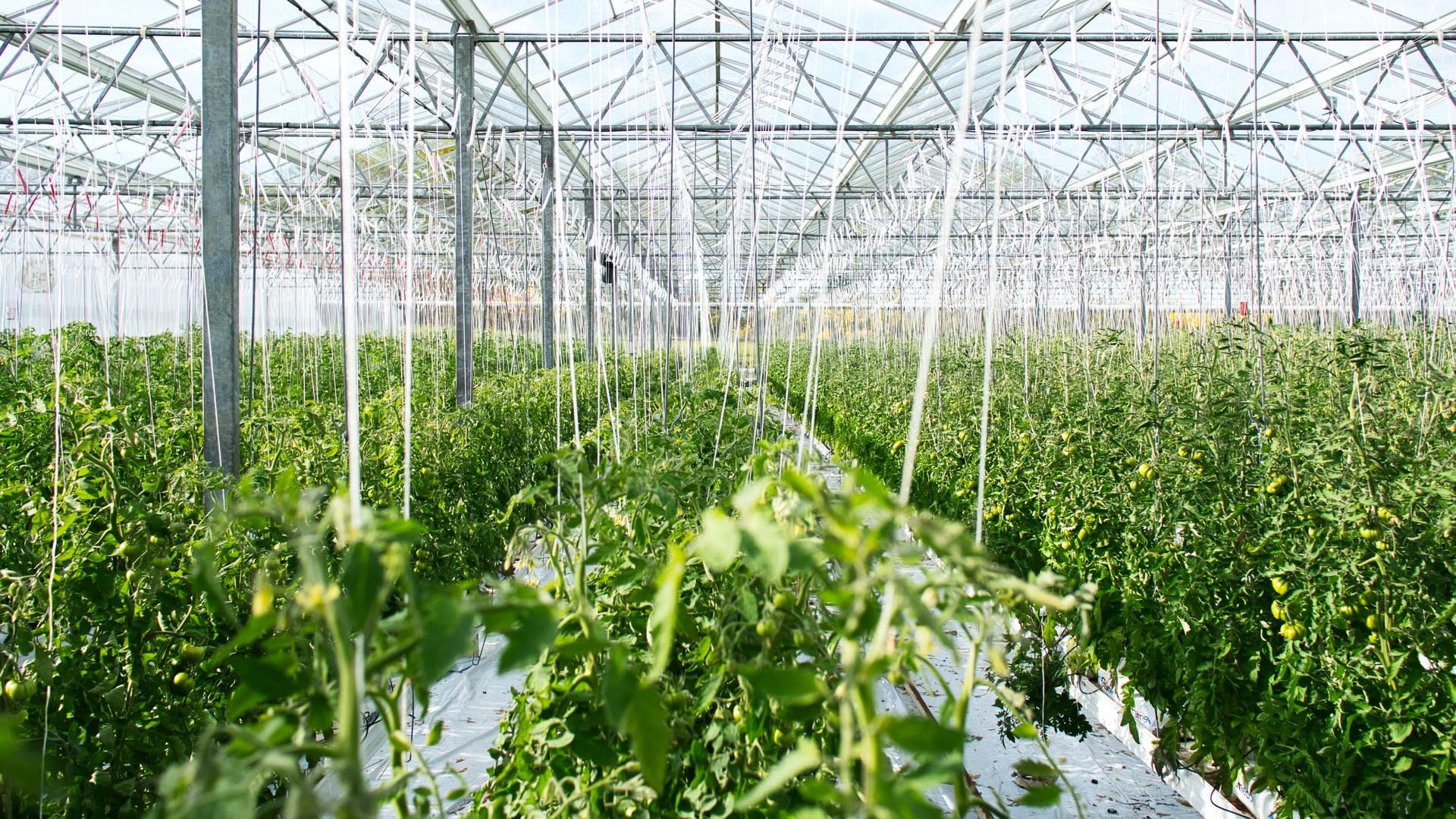
Greenhouses
Warm the floors and the beds to keep extend your growing season and increase crop yield.